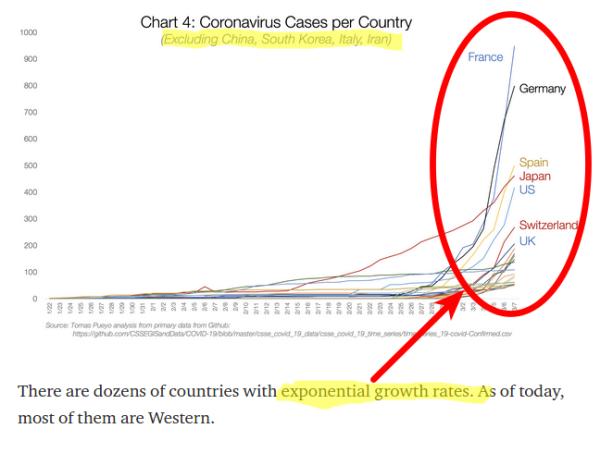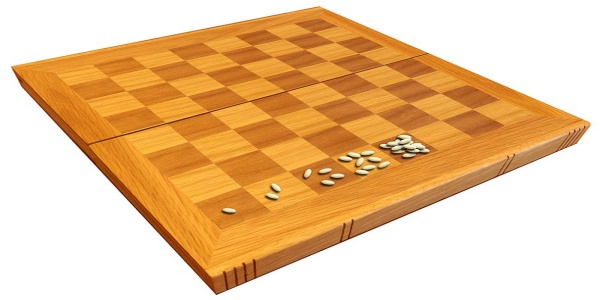The second half of MANY chessboards
I’ts just where we ALL are, right now. And it’s dangerous.
By nature, human individuals do most things linearly, and that is why it is easy for us to understand things that evolve linearly. Linear growth is what, for example, children do as they grow in weight: change, yes, but at constant speed, at least on average.
Not everything in the world is linear, however. There is also exponential growth: another mathematical function that, says this wonderful post about its lethality, looks like a jet taking off. Rapid, explosive, and above all it continues to accelerate as it goes, all the time. Exponential growth happens “gradually, and then suddenly”.
Exponential growth is why, and how:
(from that post, again)
- it only took Pokemon Go 14 days to catch 50 million consumers
- it took smartphones 16 years to have one billion users, but only four more years to reach tw billions
- it took COVID-19 67 days to reach 100K cases globally. Then only 11 more days to make the next 100K, and only four for the third 100,000 cases

<u><em><strong>CAPTION:</strong>
<a href="/2020/03/coronavirus-in-italy-and-what-it-should-mean-for-everybody/" target="_blank">Exponential COVID-19 growth, from one of my Coronavirus reports</a>
</em></u>
The chessboard problem
Exponential growth is what makes the classical “Wheat and Chessboard Problem a problem:

<u><em><strong>CAPTION:</strong>
<a href="https://en.wikipedia.org/wiki/Wheat_and_chessboard_problem" target="_blank">From Wikipedia</a>
</em></u>
“If a chessboard were to have wheat placed upon each square such that one grain were placed on the first square, two on the second, four on the third, and so on (doubling the number of grains on each subsequent square), how many grains of wheat would be on the chessboard at the finish?"
The answer is “about 2,000 times annual world production of grains”. This is what exponential, that is “accelerating all the time”, means.
The second half of the chessboard, and our problems with it
In the Wheat and Chessbord problem, there are more grains in the first square of the second half of the chessboard, than in the entire first half of it. For this reason, “The second half of the chessboard” came to mean the point where an exponentially growing factor begins to have a significant impact on a system, whatever that system is. R. Kurzweil first used this expression to mean “the point where exponential growth takes on a life of its own, and “its impacts become massive, things get crazy, and the acceleration starts to elude most humans' imagination and grasp”
Our problems with exponential growth are that:
- as individuals (decision makers included!), by default we are “dumb to exponential growth” because that is not how we individually function, biologically. Unless we get cancer or something like it, that is
- but as as society, we are just in the second half of many different, dangerous chessboards, some reinforcing each other
- and the second half of the chessboard is where one loses control
The chessboards we are in are all those socioeconomic dogmas that generate way more anxiety and inequality than wealth, while also constituting an exponential consumption of Earth’s finite resources.
Luckily, there is also a “good side” of this exponential chessboards mess, if we can just educate ourselves to see it: small but early interventions can often have a much larger effect than we can imagine. Conclusions left as exercise for the reader.
Who writes this, why, and how to help
I am Marco Fioretti, tech writer and aspiring polymath doing human-digital research and popularization.
I do it because YOUR civil rights and the quality of YOUR life depend every year more on how software is used AROUND you.
To this end, I have already shared more than a million words on this blog, without any paywall or user tracking, and am sharing the next million through a newsletter, also without any paywall.
The more direct support I get, the more I can continue to inform for free parents, teachers, decision makers, and everybody else who should know more stuff like this. You can support me with paid subscriptions to my newsletter, donations via PayPal (mfioretti@nexaima.net) or LiberaPay, or in any of the other ways listed here.THANKS for your support!